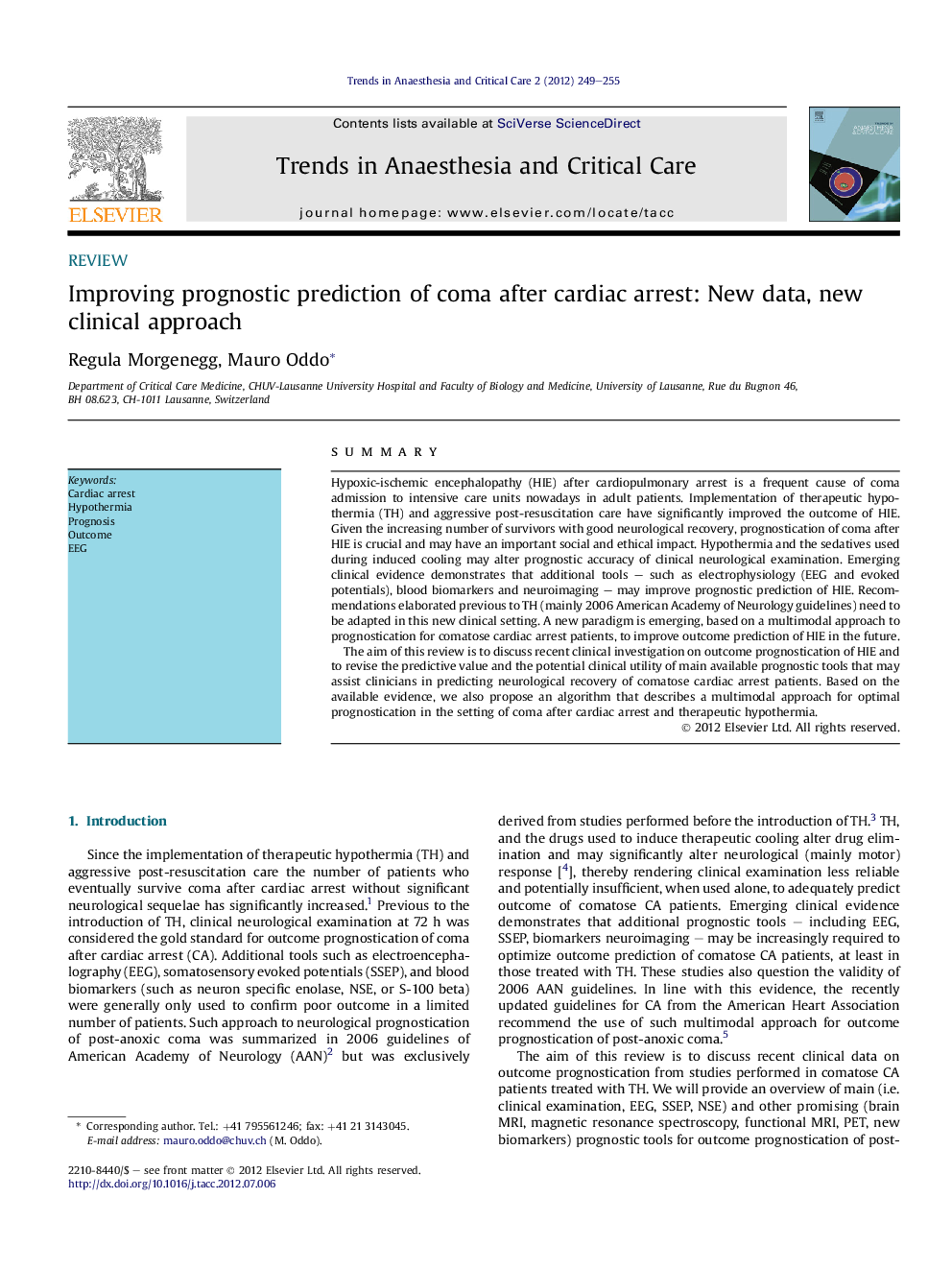| Article ID | Journal | Published Year | Pages | File Type |
|---|---|---|---|---|
| 2772745 | Trends in Anaesthesia and Critical Care | 2012 | 7 Pages |
SummaryHypoxic-ischemic encephalopathy (HIE) after cardiopulmonary arrest is a frequent cause of coma admission to intensive care units nowadays in adult patients. Implementation of therapeutic hypothermia (TH) and aggressive post-resuscitation care have significantly improved the outcome of HIE. Given the increasing number of survivors with good neurological recovery, prognostication of coma after HIE is crucial and may have an important social and ethical impact. Hypothermia and the sedatives used during induced cooling may alter prognostic accuracy of clinical neurological examination. Emerging clinical evidence demonstrates that additional tools – such as electrophysiology (EEG and evoked potentials), blood biomarkers and neuroimaging – may improve prognostic prediction of HIE. Recommendations elaborated previous to TH (mainly 2006 American Academy of Neurology guidelines) need to be adapted in this new clinical setting. A new paradigm is emerging, based on a multimodal approach to prognostication for comatose cardiac arrest patients, to improve outcome prediction of HIE in the future.The aim of this review is to discuss recent clinical investigation on outcome prognostication of HIE and to revise the predictive value and the potential clinical utility of main available prognostic tools that may assist clinicians in predicting neurological recovery of comatose cardiac arrest patients. Based on the available evidence, we also propose an algorithm that describes a multimodal approach for optimal prognostication in the setting of coma after cardiac arrest and therapeutic hypothermia.
